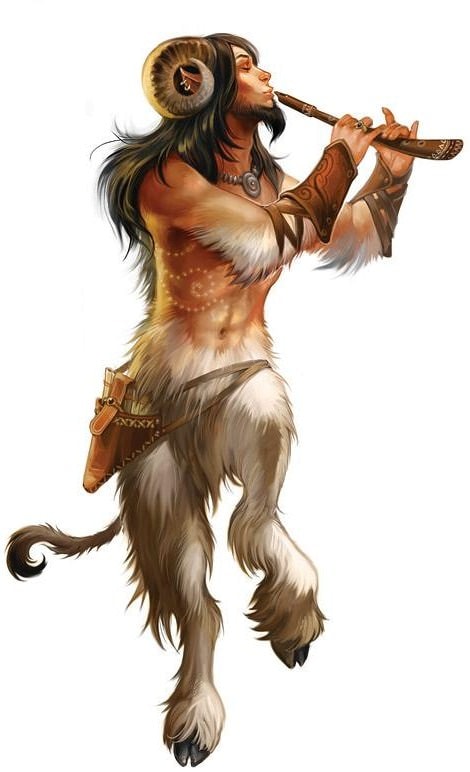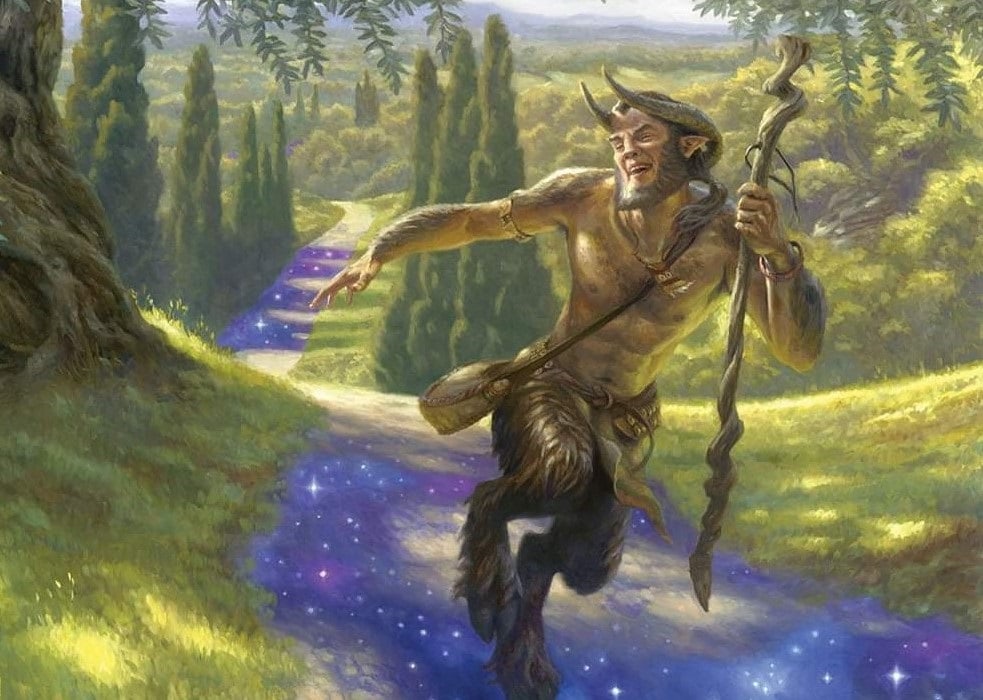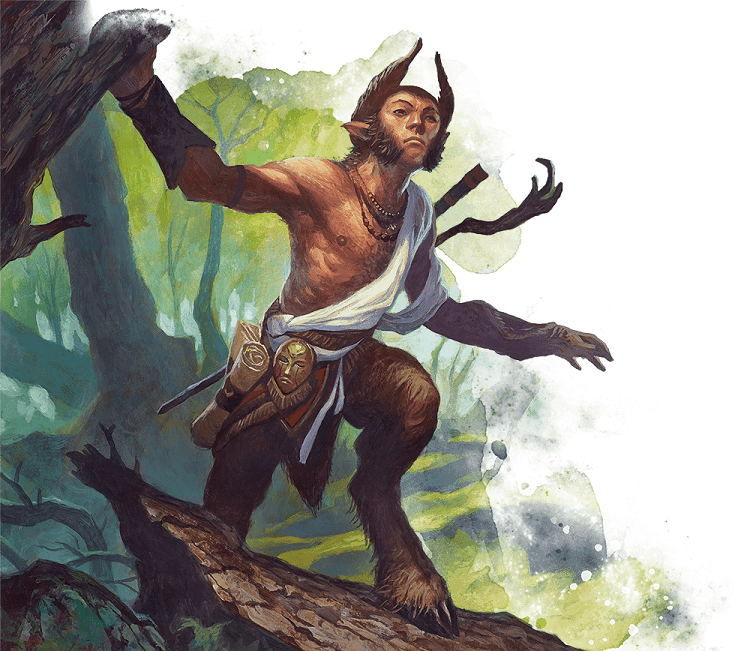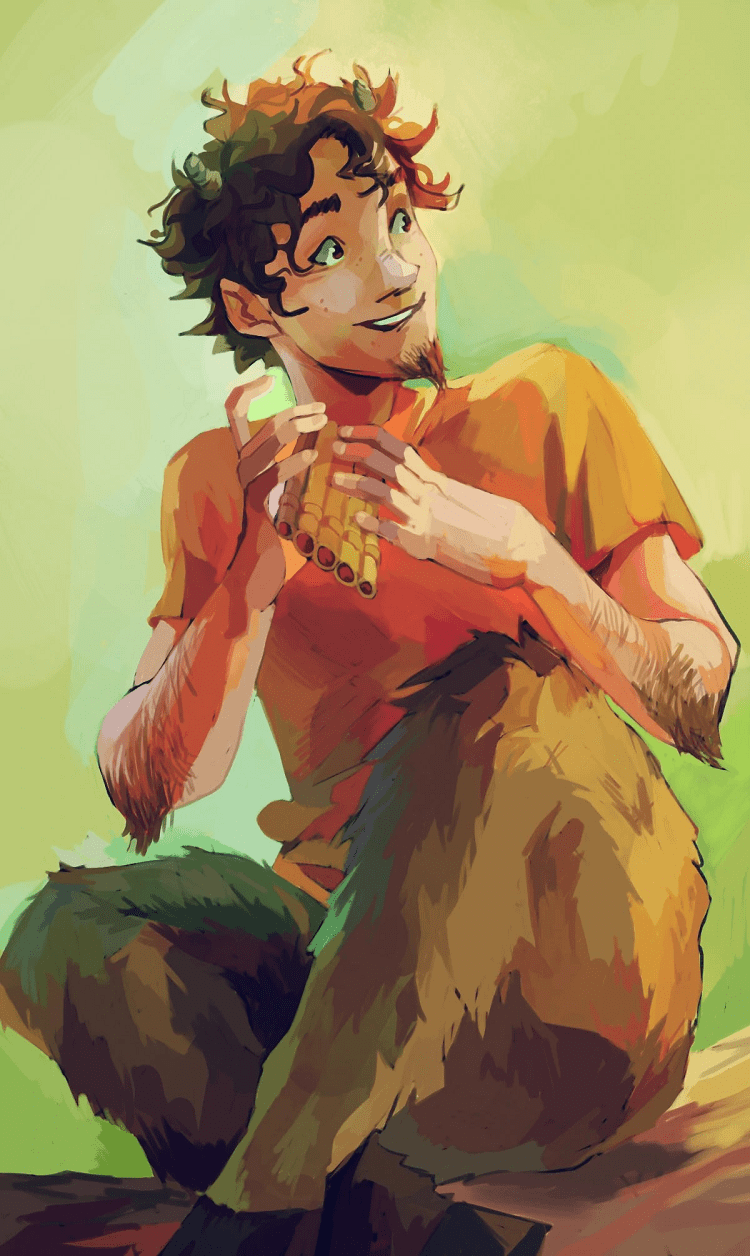A Satyr 5e guide is a valuable tool whether you’re creating a character or a monster in DnD. For decades, the Satyr was just a monster or an elusive NPC that made appearances in random D&D campaigns.
But in 2020, Satyrs became a playable race. Needless to say, things changed after that, and Satyrs became a more significant part of the world of Dungeons and Dragons. It’s all thanks to Magic: The Gathering.
Bottom Line on Satyrs in 5e
Satyrs are traditionally half-man and either half-goat or half-horse, depending on the origins. In DnD, they are half-goats with a lot of personality and a desire to have fun.
Satyrs can be played as homebrew player characters, monsters, and NPCs in Dungeons & Dragons 5e. They are known for being quite spontaneous and enjoying life.
Satyrs generally get extra Charisma and Dexterity. They love to live in the moment and are inclined to be either Neutral or Good. However, most Satyrs have a mischievous streak.
What is a Satyr in 5e?

A Satyr is a race that was introduced to 5e in Mystic Odysseys of Theros. The book is an official D&D sourcebook, so as long as you’re not playing base-DnD only, then Satyr is canon.
The world Satyrs are from is Theros. This plane is initially found in Magic: The Gathering and is home to centaurs, merfolk, gorgons, and more. That more includes the Satyrs, who are described as “hedonistic goatmen with a duplicitous nature.”
Since both Dungeons & Dragons and Magic: The Gathering are owned by Wizards of the Coast, I’m surprised it took this long for the merging to happen. But I am glad that Theros is one of the planes the company chose.
Satyrs as Player Characters
- Ability Score Increase – +2 to Charisma and +1 to Dexterity.
- Age – Same as humans
- Alignment – Any (Chaotic Good is most common)
- Size – Medium.
- Speed – 35 feet.
- Fey – You are fey.
- Ram – You may make an unarmed ramming attack that deals 1d4 + your strength modifier.
- Magic Resistance – Grants advantage on all saving throws against spells and magical effects.
- Mirthful Leaps – Roll a D8 when making a long or high jump and add the result as feet that you cover.
- Reveler – Grants proficiency in Performance and Persuasion skills and one musical instrument of your choice.
- Languages – Sylvan and Common.
Satyrs can be player characters. As long as your DM is cool with it, you can be a Satyr. They are generally a happy-go-lucky race with a lot to offer any party, as long as they can stay out of trouble.
While most Satyrs in Dungeons & Dragons are Good or Neutral, it is possible for them to be Evil. While the Satyr perks are great, I suggest coming up with a background and a class before you decide on a race.
Satyr Name Ideas

- Twinklehoof
- Baaarbara
- Baaalthazar
- Justin Baaaah-ber
- Gingerewe
- Snollygoster
- Hogwash
- Furryfur
- Pica Boy
- Headbutter
- Lambchop
- Hill Billy
- Scruffybutt
Since Satyrs are technically Fey creatures, the names are similar to Elves and Fairies. However, there is a playfulness in many of the given names that make them more likable and easier to trust.
One thing that most Satyrs have in common is that they love to go by nicknames. For given names, start with an Elf name and go from there. But if you want to be a proper Satyr, let your party call you by your nickname.
Satyr Background Story Ideas
Satyrs in 5e tend to have backgrounds built on finding joy in life. The best background is a custom one, so inventing your own will be the most exciting type of background you can wow your party with.
Satyrs often live in tribes with primarily Satyr dwellings. These can be in cities or in nature, but it can help to implement your family life into your backstory.
Think about the best party you’ve ever been to and use that as a basis. That’s what being a Satyr should capture—the ability to live in the present and enjoy life’s pleasures.
Best Satyr Classes

Any class can be a Satyr. So I’m going to break down each base class and what it would be like to play a Satyr as them. Choose whichever one you want and use this to play the best Satyr you can.
Note: I never like to say that any class isn’t good for a specified race. Choosing a D&D Class should be first – in my opinion – because they are more critical in the long run.
- Artificer – a Satyr Artificer is a good choice as they balance each other out. You get the extra movement speed and resistance to magic, making the Artificer better all-around. However, the overlapping Perception may need to be traded out with the DMs permission.
- Barbarian – again, the magic resistance is a great addition to the Barbarian’s kit as they are generally quite inadept against magic. The extra jumps and movement speed can help Barbarians close the gap between them and their enemies.
- Bard – let’s face it, Bard is the ultimate Satyr class. Everything about the cohesiveness between the Bard and the Satyr is amazing. While they don’t cover each other’s weaknesses, the way the two work together makes up for it.
- Cleric – while there isn’t anything special about this, there’s no reason that it can’t work. Satyrs aren’t notorious healers, but a Satyr Cleric doesn’t have any huge weaknesses that another race would cover.
- Druid – a backstory for a Satyr Druid would be fascinating and easy to come up with. But the Druid isn’t going to benefit directly from the extra Charisma and the Satyr’s abilities.
- Fighter – a Satyr Fighter is a good choice by any means. They have all the same benefits that a Satyr Barbarian has. The skill proficiencies add to any Fighter’s build but aren’t crucial for the decision.
- Monk – I’d say this is directly in the middle of usefulness and uselessness. A Monk can benefit from the Satyr’s bonuses, but overall, I don’t think that a Satyr Monk is exactly meta.
- Paladin – a Satyr Paladin is a really good choice because a Paladin with extra Charisma is nothing but beautiful. With the Paladin’s extra defense, the Satyr will be well-protected from physical and magical damage.
- Ranger – Ranger is another one that is in the middle. However, I personally love the concept of a Satyr Ranger. Let the Ranger lighten up and learn to party with the other Satyrs.
- Rogue – I find that a Satyr Rogue is a great combo. I like to play a charismatic Rogue, so adding extra Charisma and passively gaining the Performance skill is awesome. However, ask your DM about the overlapping Perception.
- Sorcerer – The Sorcerer is a good magic-user choice for the Satyr as the Sorcerer uses Charisma to cast their spells. The added Charisma from the Satyr is ideal for the Sorcerer.
- Warlock – the Warlock also uses Charisma to last spells, so the combination is impressive. If you’re choosing between Warlock and Sorcerer, think about how funny a Satyr with a Patron would be.
- Wizard – this can work. But in my opinion, you’re better off with a Sorcerer or Warlock. However, if you chose a Wizard already and want to choose a class now, there’s nothing wrong with a Satyr.
Satyrs as NPCs
Satyrs have been NPCs long before they were introduced in Mystic Odysseys of Theros. When a Satyr is an NPC, it follows all the same rules that the player character Satyr does – under the DM’s discretion.
Creating NPCs isn’t always easy without inspiration, however. If you want to go with the stereotype, then stick with the partying Bard who invites the party to a literal party. Or perhaps the shopkeeper/barkeep who loves to play tricks on guests.
Satyrs as Monsters

- Challenge – 1/2 (100 XP)
- Proficiency Bonus – 2
- Stats – STR 12 (+1), DEX 16 (+3), CON 11 (+0), INT,12 (+1), WIS 10 (+0), CHA 14 (+2)
- Languages – Common, Elvish, Sylvan
- Armor Class – 14
- Speed – 40
- Hit Points – 31 (or 7d8)
- Skills – Perception +2 (passive 12), Performance +6, Stealth +5
Satyrs – like any race – can also be monsters in 5e. They were monsters before they were a playable race. The monster Satyr can Ram, but it usually has a Shortsword and a Shortbow as well.
When you make a monster in DnD, as the DM, you can make them any way that you like. So if you don’t like the present or the standard personality, then switch it up.
The rules for Monsters are limited only by the DM’s imagination. This is their campaign, and as long as they keep things fair, it’s all free game. So create any Satyr your heart desires.
Famous Satyrs for Inspiration
Because of possibly baseless claims that Satyrs are always evil, the depiction of them was heavily influenced for centuries. These famous Satyrs can be the base for your Satyr character.
Tumnus – The Lion, The Witch, and The Wardrobe
When I imagine a fictional Satyr, my mind always pictures Mr. Tumnus, even though he’s always called a Faun, rather than a Satyr. The timid Faun is an ideal character for someone to base their Satyr off of.
Grover Underwood – Percy Jackson Series

Grover Underwood is a popular character for Percy Jackson book lovers. When it comes to the movies, he only appears in The Lightning Thief as Percy’s flirtatious friend.
Now, the new Percy Jackson series on Disney Plus will feature Grover Underwood as well. The Satyr’s personality changes depending on the adaption, so you can choose any version you want.
Marvel Satyrs
Although I don’t recall Satyrs appearing in the MCU, they are enemies in the comics. They are used by Ares to manipulate humans into doing his bidding. Not hugely inspirational, but it is an option, especially for monsters.
The Faun – Pan’s Labyrinth
In the spooky movie Pan’s Labyrinth, a Satyr named The Faun appears as “a creature that is neither good or evil.” The complex character ages backward and holds many secrets.
Phil – Hercules
Phil is one of the most popular Satyrs that you may forget is a Satyr. If I could choose one famous Satyr for a party member to use as inspiration, it would be Phil – the ideal salty comic relief.
Warcraft Satyrs
From God of War to Mortal Kombat, Satyrs are found in dozens of video games. But when I think about video game Satyrs, I imagine those in the Warcraft series. Just remember to be an Allied Satyr.
FAQs
Question: Are Satyrs Evil in 5e D&D?
Answer: Satyrs are not evil in Dungeons and Dragons. In fact, most of them are of a Good alignment. The exact alignment is up to the player if a player character or DM if an NPC.
Question: Can I Play Satyr in Any DnD Campaign?
Answer: It all depends on the DM. Most DMs will allow it as races are quite flexible, but don’t be surprised if it’s a no-go. Classes on the other hand may be something your DM is picky about.
Question: Are Satyrs Good in 5e?
Answer: Yes. I believe Satyrs are a solid choice, especially if you are playing a Charisma-based character or need the extra magic resistance. Satyrs are well-rounded and beautiful additions to any party.
Question: What is the Best Class for a Satyr 5e?
Answer: The best class for a Satyr is undeniably a Bard. Everything about them makes it feel as if they were made specifically for the Bard. So move aside, Half-Elves; the Satyr is here to steal the spotlight.
Satyr 5e Guide: What Makes Satyrs Different
Satyrs are a unique race that I’ve seen players be before Mystic Odysseys of Theros made them canon to the 5e world. If you want to play a Satyr, then ask your DM if Mystic Oddysey races are okay.
The Satyr doesn’t have anything that is game-changing – which DMs typically hate – so you can move around like a ninja and display your talents to the world. Everyone loves a good Satyr.
If you’re into roleplaying, you can rock this party-loving, Charisma-based race on your next campaign. Let them show the party how to have a good time and never forget where they came from.
- Augury 5e Guide – The Vaguest and Coolest Cleric Spell - September 5, 2022
- Roc 5e Guide – The Big, Dumb Bird You Don’t Want To See - September 5, 2022
- Best Drow Name Ideas – From Alvin to Sânziana - August 30, 2022

